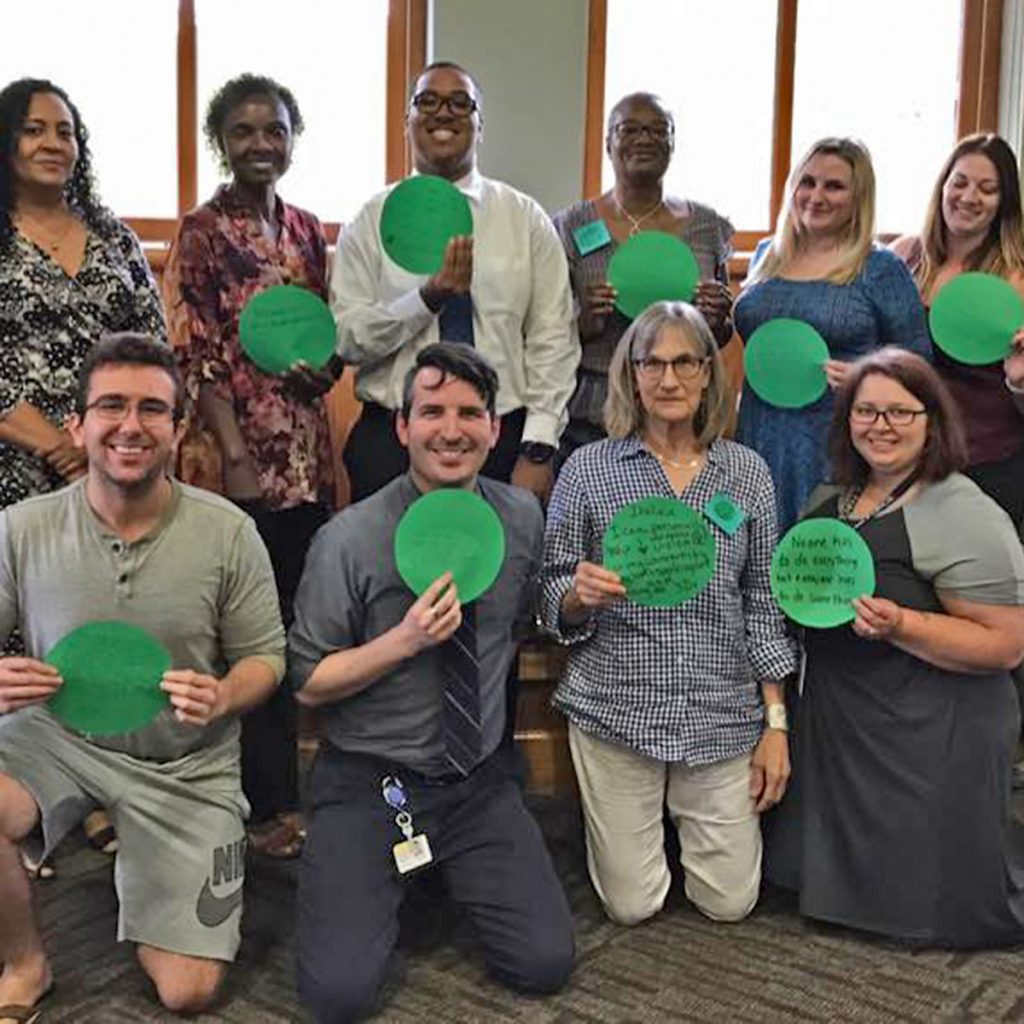Community
Overview
We need widespread support and participation to catalyze change in our communities. Unique and powerful partnerships between local government, business leaders, and civic, non-profit, cultural, and faith-based organizations ensure communities are mobilized to create a critical mass. We’ve engaged local bartenders. We’ve organized faith communities around member safety. We’ve strategized with prominent local businesses to create respectful work environments. In communities around the world, our work continues to bring people together to create new partnerships and paths that affect lasting, positive change.


Spotlight: Claremont, NH
Breaking down siloed approaches to community mobilization has been key to Claremont’s success in engaging their community in a new way. They have formed a strong partnership between a non-profit violence service provider, the local school district, and the chamber of commerce. While the community program focuses on the adult population and is distinct from the K-12 programs, they use a Green Dot Youth Leadership Summit in conjunction with their broader effort. The Summit focuses on how young people can create their ideal community through being active bystanders, building healthy relationships, and strengthening their leadership and communication skills. This program harnesses the roles young people play in creating community norms outside the classroom. It is built to work hand-in-hand with the adult program, explicitly creating partnerships and collaborations that work toward the same end—a safer community.
Spotlight: Homer, AK
A small coastal community on Alaska’s Kenai Peninsula, Homer rallied together around prevention of violence after a victimization survey showed that over half of the women in their region had experienced domestic or sexual violence. Activists from the non-profit community, child welfare coalitions, and local businesses joined forces to plan and implement a broad effort to engage the community in a new way. Through the Community program, they trained bartenders, testified before their city council, brought the first ever high school training to Alaska, and encouraged businesses to challenge each other to create positive community action through a ten day prevention challenge. Each of these actions has forged new partnerships and created a safer culture in Homer.

Spotlight: Gainesville, FL
Supported by the commitment of more than a dozen key partners representing ten agencies, Gainesville, FL has seen incredible impact. 64% of the population are African American, 49% of whom are between the ages of 15-34. The program’s strategies for identifying the influencers and potential early adopters are centered on supporting the ongoing work of their partnering agencies within the neighborhoods. Their first subgroups consisted of service providers from a variety of partnering organizations including social workers, librarians, and code enforcement officers, to name a few. Many of the service providers were a key part in supporting residents as they went through training, strengthening the proactive norms to create safe a community.
Oregon Tradeswomen
Partnering to addresses bullying, harassment, hazing, and other forms of aggression in Portland’s construction trades.
Connecticut College
Partnering to end sexual and dating violence and stalking
on campus.
Research
American Journal of Preventative Medicine
This study evaluated the Green Dot bystander intervention to reduce sexual violence and related forms of interpersonal violence in 26 high schools over 5 years and showed a significant decrease in sexual violence perpetration and also in other forms of interpersonal violence perpetration and victimization.
Read more ↗In Alaska, Green Dot was implemented statewide from 2012-2015. The 2015 Alaska Victimization Survey conducted by the University of Alaska Anchorage Justice Center for the Council on Domestic Violence and Sexual Assault saw a 32 percent decrease between 2010 and 2015 of women reporting they had experienced intimate partner violence within a year. During that same five-year period, the council also saw a 33 percent decrease in reported sexual assaults. While the focus of this study was not the effectiveness of the Green Dot program per se, the results showed a significant decrease in these types of violence after a statewide implementation of the Green Dot program.
Read more ↗
